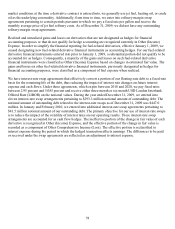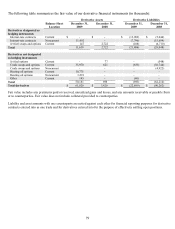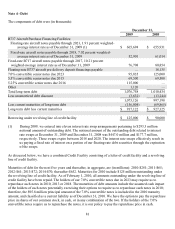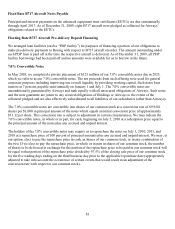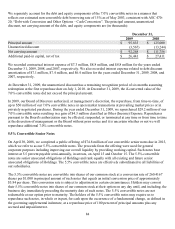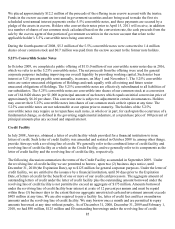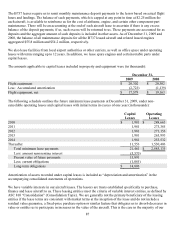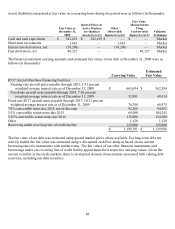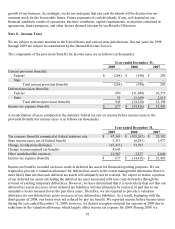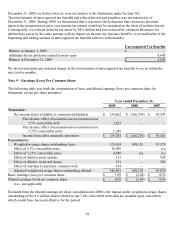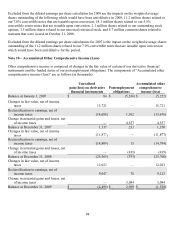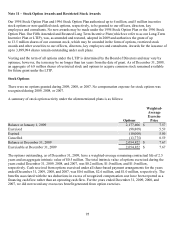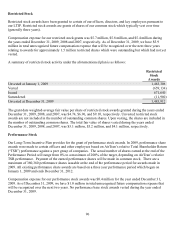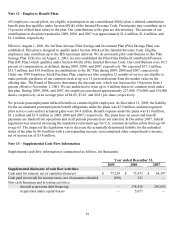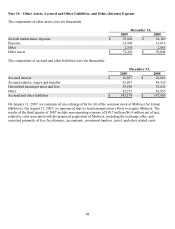Airtran 2009 Annual Report Download - page 97
Download and view the complete annual report
Please find page 97 of the 2009 Airtran annual report below. You can navigate through the pages in the report by either clicking on the pages listed below, or by using the keyword search tool below to find specific information within the annual report.88
aircraft leases; however, we have two aircraft leases that contain fixed-price purchase options that allow us to
purchase the aircraft at predetermined prices on specified dates during the lease term. We have not consolidated
the related trusts because, even taking into consideration these purchase options, we are not the primary
beneficiary based on our cash flow analysis. Our maximum exposure under the two leases is limited to the
remaining lease payments, which are reflected in the future minimum lease payments in the table above.
Note 6 - Fair Value Measurements
We adopted the required provisions of ASC 820, “Fair Value Measurements and Disclosures” (Fair Value
Measurements and Disclosures Topic), as of January 1, 2008, and adopted certain deferred provisions on
January 1, 2009. The Fair Value Measurements and Disclosures Topic is a technical standard which defines fair
value, establishes a consistent framework for measuring fair value, and expands disclosures for each major asset
and liability category measured at fair value on either a recurring or a nonrecurring basis. The Fair Value
Measurements and Disclosures Topic clarifies that fair value is an exit price, representing the amount that
would be received to sell an asset or paid to transfer a liability in an orderly transaction between market
participants. As such, fair value is a market-based measurement that should be determined based on
assumptions that market participants would use in pricing an asset or liability. As a basis for considering such
assumptions, the Fair Value Measurements and Disclosures Topic establishes a three-tier fair value hierarchy
which prioritizes the inputs used in measuring fair value as follows:
Level 1- observable inputs such as quoted prices in active markets;
Level 2- inputs, other than the quoted market prices in active markets, which are observable, either directly or
indirectly; and
Level 3- unobservable inputs in which there are little or no market data, which require the reporting entity to
develop its own assumptions.
Assets and liabilities are to be measured at fair value and are based on one or more of the three valuation
techniques. The valuation techniques are as follows:
(a) Market approach. Prices and other relevant information generated by market transactions involving
identical or comparable assets;
(b) Cost approach. Amount that would be required to replace the service capacity of an asset;
(replacement cost); and
(c) Income approach. Techniques to convert future amounts to a single present amount based on
expectations (including present value techniques, option-pricing and excess earnings models).


